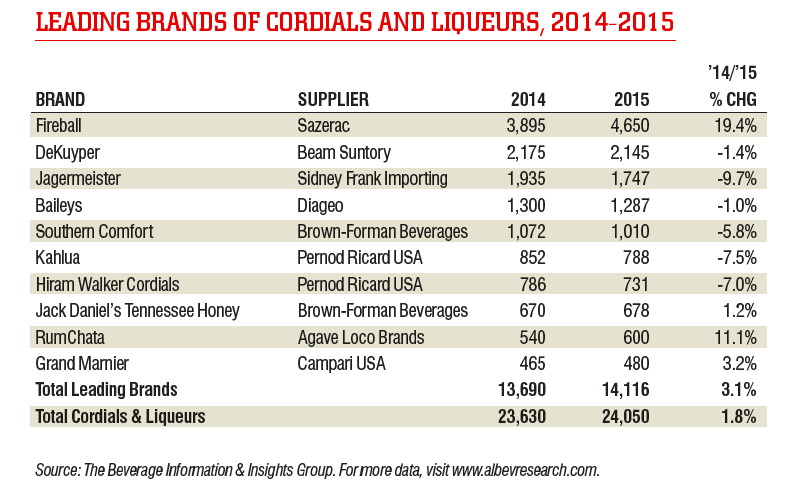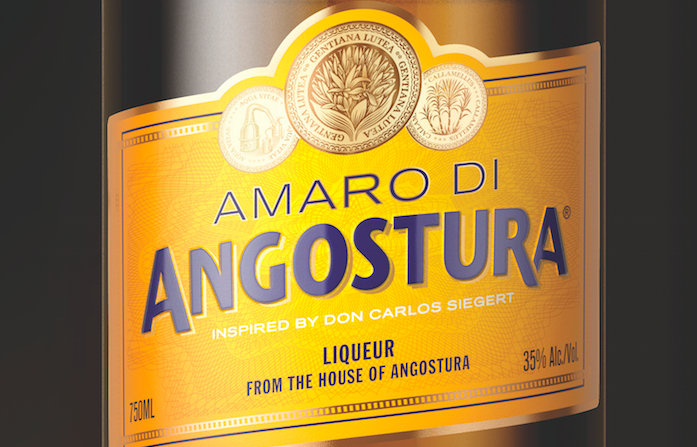With so much attention being lavished these days on the surging popularity of cocktails and premium spirits, it’s easy to understand why liqueurs and cordials are frequently relegated as passé and out of step with contemporary tastes. They’re not glitzy and rarely—if ever—get coverage in the media. The popularly held misconception about liqueurs is they’re thick, sweet and syrupy. Many of the liqueurs of the past closely resembled cough syrup.
Well, times have changed.
Today, most liqueurs are produced to be lighter and drier, or more in step with contemporary tastes. The classic proprietary liqueurs owe their longevity to the fact that they’re well balanced and fabulously delicious.
Shaking and Moving
It appears as if free agency has come to the world of liqueurs. Four of the world’s greatest elixirs have changed parent companies and now play for new teams.
French powerhouse Grand Marnier was recently acquired by Campari USA. Made in Neauphle- le-Château, Cognac, the liqueur is crafted exactly as it was over a century ago. Bitter Haitian orange peels are fi rst slowly macerated in cognac. The infused-spirit is redistilled, blended with the fi nest cognacs from each of the growing regions, and skillfully sweetened with. The liqueur is then barrel aged at the Marnier-Lapostolle cognac cellars at Château de Bourg.
There are two ultra-premium line extensions. In 1927, the company celebrated its centenary with the release of Grand Marnier Cuvee de Centenaire. Fifty years later, Marnier-Lapostolle released Grand Marnier Cuvee de Cent Cinquantenaire, which may well be the pinnacle of elegance and sophistication.
Another classic proprietary brand—Drambuie—switched uniforms and now plays for William Grant & Sons. Legend has it that its recipe was brought to Scotland in 1745 by Charles Edward Stuart—who was better known as Bonnie Prince Charles. After his armies were defeated at the Battle of Culloden Moor, Stuart took refuge on the Isle of Skye at the home of Captain Mackinnon. In gratitude, the Prince gave his protector the recipe for present day Drambuie.

The liqueur has unlimited creative possibilities. It’s most famous use is in the timeless drink—the Rusty Nail. The rocks drink is a mix of three parts Scotch whisky and a healthy shot of Drambuie. Southern Comfort and Tuaca, long-time staples of Brown-Forman, have been purchased by the Sazerac Company. Southern Comfort is about as American as liqueurs get. It is now made in Louisville, Kentucky, from the same closely guarded recipe. Southern Comfort is made from a base of pure grain neutral spirits and flavored with peach liqueur, natural peach and citrus extracts. After the infusion process is complete, the liqueur is filtered and bottled at both 35% and 50% ABV.
Tuaca traces its origins to the 16th Century and the Italian Renaissance. Over the centuries the secret recipe was lost and the liqueur disappeared. Then in 1938, brothers-in-law Gaetano Tuoni and Giorgio Canepa from Tuscany uncovered the 500-year-old recipe and started producing the rich amber liqueur. American GIs serving in Italy during World War II developed a fondness for Tuaca, which eventually led to its importation into the U.S. shortly after the war. The liqueur is comprised of vanilla, herbs, spices, citrus essence and sugar blended on a foundation of fine, barrel-aged Italian brandy. The brandies selected by the master distiller range in age between 3 to 10 years. The 100% natural liqueur is bottled at 35% alcohol.
 Latest Innovations
Latest Innovations
While category sales were down slightly in 2015, the liqueur and cordial segment remains vital and well-supported by suppliers. Retailers on the lookout for new and exciting flavors are driving demand and suppliers are only too pleased to fan the flames with intriguing releases. So in the event that you missed the fanfare over their initial release, here’s the scoop on the hottest prospects.
AMARO DI ANGOSTURA — The ultra-suave product is one of a growing class of herbal elixirs now competing in the American market. The amaro is crafted with surgical precision by the undisputed king of bitters—the House of Angostura. The amaro is made on the island of Trinidad from a blend of botanicals, aromatics, spices and bitter herbs, all of which macerated in the neutral spirits to allow the various fl avors to fully integrate. Only a select few have access to the well-protected secret recipe for both the bitters and the new Amaro di Angostura (70 proof ).
ANCHO REYES ANCHO CHILE LIQUEUR — Created in 1927, this historic liqueur is more accurately described as a menjurje, a type of homemade libation created from a blend of green poblano chiles. Afterwards, the sun-dried ancho chiles are macerated in neutral cane spirit for about six months in small iron vats. The liqueur is filtered minimally to preserve its bold flavor and bottled at 40% ABV.
BARROW’S INTENSE GINGER —This soon-to-be indispensible liqueur is handcrafted in Brooklyn from more than 200 pounds of fresh ginger per batch. The liqueur contains only four ingredients—ginger, sugar, cane spirit and filtered water—and no artificial flavors, colors or preservatives. The liqueur has a cloudy appearance due to the sediment in the bottle, which is to be expected with an all-natural product like this. Barrow’s is appropriately named, as it quickly bathes the palate with an intense blast of spicy warmth and the alluring flavor of fresh ginger. The finish is long and spicy with a hint of sweetness (22% ABV).
 GIVEN — French import Given Liqueur (pronounced “geevahn”) is made with a base of unaged Highlands tequila. Upon exiting the still, it is transported across the Atlantic to the heart of the Cognac region of France. There it is taken to a family-operated distillery and slowly macerated with fresh limes. At the same time, ripe Sauvignon Blanc grapes are compressed and allowed to gradually crystallize into an all-natural sweetener. The Sauvignon Blanc grape syrup is then added to the lime-infused tequila to create balance and harmony. It is bottled at 34 proof.
GIVEN — French import Given Liqueur (pronounced “geevahn”) is made with a base of unaged Highlands tequila. Upon exiting the still, it is transported across the Atlantic to the heart of the Cognac region of France. There it is taken to a family-operated distillery and slowly macerated with fresh limes. At the same time, ripe Sauvignon Blanc grapes are compressed and allowed to gradually crystallize into an all-natural sweetener. The Sauvignon Blanc grape syrup is then added to the lime-infused tequila to create balance and harmony. It is bottled at 34 proof.
PIERRE FERRAND DRY CURAÇAO — This liqueur is made in Cognac, predominantly from dried Curaçao orange peels, lemon and sweet orange peels and a secret blend of spices. The peels and spices are slowly steeped in unaged brandy, after which the infused spirit is redistilled for maximum fl avor extraction. That distillate is then blended with brandy and Pierre Ferrand Cognac and aged in Limousin barrels. During aging, the blend is re-infused with Curaçao oranges peels to add a bittersweet note (40% ABV).
PLYMOUTH SLOE GIN — Back from an extended hiatus, Plymouth Sloe Gin is again turning heads here in the U.S. After decades of fervent requests from the international cocktail community, Black Friars Distillery—producers of Plymouth Gin—has resurrected its legendary sloe gin. The succulent, ruby red liqueur is made by macerating Plymouth Gin with fresh sloe berries and a touch of sugar (52 proof ).
Robert Plotkin is a judge at the San Francisco World Spirits Competition and author of 16 books on bartending and beverage management including Secrets Revealed of America’s Greatest Cocktails. He can be reached at www.AmericanCocktails.com or by e-mail at robert@barmedia.com.




